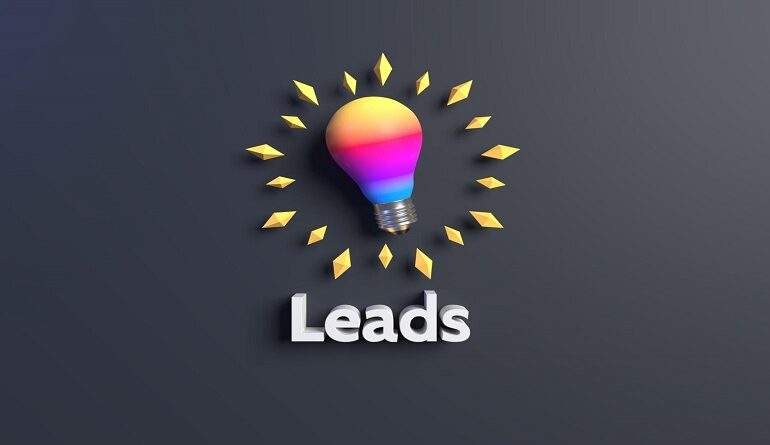An In-Depth Look At Lead Generation Vs Demand Generation

Are you aware of what is demand generation vs. lead generation? Many people find themselves lost when it comes to making the distinction between two things. Don’t worry – you’re not alone! In a rapidly changing world, B2B marketers are beginning to recognize the need to separate demand generation and lead generation to see any results.
Although you may use them in tandem, these two strategies are very different and must be utilized independently if you’re looking for success.
This article will define demand and lead generation, highlight their differences, and explain how they should be implemented into your marketing strategy to achieve maximum performance.
Definition: Lead Generation Vs Demand Generation
Generating interest in your product or service is the aim of demand-generation marketing campaigns. Crafting creative and effective strategies to create demand is the goal of demand generation.
Meanwhile, lead generation campaigns help collect information about those potential customers to convert them into leads who may purchase from you in the future and become paying customers.
Demand generation efforts seek to spark interest in your business and entice customers with the promise of great products and services.
This often involves long-term plans which rely heavily on brand positioning and visibility. An important factor in a successful demand gen strategy is to ensure as many potential customers see your campaigns as possible.
Lead generation campaigns typically use gated content such as whitepapers, eBooks, how-to guides, survey reports, webinars, and thought leadership articles.
These are offered in exchange for contact information from prospects that have shown an interest in what your business has to offer – usually by filling out a form on a landing page specifically created for this purpose.
By gating content like this, your sales team can keep more ‘unqualified’ leads from moving through your sales funnel too quickly. Only those who intend to use your product or service should get access.
Launching Successful Demand And Lead Generation Campaigns
To successfully execute both strategies, you must start with great data to better understand your buyer personas.
The more data points you have (say job function, company size, or industry), the easier it’ll be for you hit them with relevant campaigns later on down the line when attempting either demand or lead gen activities.
Generating Leads Vs Building Demand Through Content Marketing
Content marketing plays a major role in demand gen and lead gen tactics. For demand generation content purposes, content must remove all barriers between customers’ decision-making process and purchase from you (data sheets, videos, etc.).
In comparison, lead generation content focuses on providing relevant content behind gated forms asking for contact info (think Ebooks). This way, only qualified leads come through the sales funnel instead of those who just signed up out of curiosity rather than intent.
Exploring How Both Demand Generation And Lead Generation Intersect
You use a demand generation process such as blogging or creating resources for visitors on your website, which helps make audiences aware of your business and get interested in your offer.
Then comes lead generation strategies, which nurtures these same target audience and converts them into loyal customers by convincing them that your offer will help meet their needs.
This makes it easier for businesses when collecting leads as they already know that their leads are qualified because they’ve shown intent in finding out more about their product or service offering before even speaking with a sales rep.
Benefits Of Demand Generation Vs Lead Generation Process
Generating demand and creating leads are two essential elements of a successful business.
Creating Awareness
The main goal of the demand generation strategy is to build awareness about a company and the problems it solves, ensuring potential customers know that your business exists, even if they don’t need your solution immediately. This helps establish brand authority among an audience and creates trust.
Differentiating Solutions
Lead generation tactics help differentiate your brand from competitors by presenting all the benefits of using their product.
It uses resources that require contact information for further engagement with a business, offering more explicit content about lead nurturing and positioning a brand.
Driving Conversions
By creating free resources such as articles or blog posts with useful information, demand generation answers questions that prospects may have about a particular offering and drives conversions.
Strategies To Enhance Your Demand Generation And Lead Generation Efforts
Your B2B contact data must be complete and accurate enough to allow you to identify these personas before launching any campaign. Otherwise, there’s no chance it’ll ever be successful if based purely on guesswork!
With Leads Finder today, this isn’t just possible but achievable, so why not start fueling your funnel with high-quality leads now?
Understanding what is demand generation vs. lead generation is essential for marketers. By combining both strategies, companies can maximize their chances of success with marketing campaigns.
FAQs
What are the two main approaches to lead generation?
Lead generation can be divided into two categories: inbound and outbound.
Inbound lead generation involves getting people to come to you – such as through SEO or social media marketing.
On the other hand, outbound lead generation requires actively connecting with potential customers – like through email marketing or direct mail campaigns.
What is an example of a demand generation strategy?
Through the use of social media campaigns, businesses can create visibility and awareness for their products and services.
They can involve advertising, content sharing, influencer marketing, and other methods to generate interest in what is being offered.
Lead generation focuses on converting that interest into action – typically through providing contact information, signing up for an email list or completing a sale.
What are the types of demand generation?
Effective demand generation requires building brand awareness, utilizing inbound marketing tactics to generate leads, enabling sales teams and retaining customer loyalty.
By combining these elements, businesses can find success in nurturing a pipeline of interested customers.
Related Post:





1 Comment
What a fantastic post, I truly had a great time reading it. Your writing style is very engaging and your ideas are very relevant. Keep it up!